Cu Chi Tunnels served as the living quarters for soldiers and civilians during Vietnam’s resistance against France and America. Today, this remarkable site stands as a symbol of perseverance, determination, and resilience during one of the most challenging periods in Vietnamese history.
Discover the living conditions in Cu Chi Tunnels with Joy Journeys in the article below!
Contents
The Physical Environment
Cramped and Confined Spaces
The Cu Chi Tunnels form an intricate network of narrow passageways, just wide enough for individuals to crawl or crouch through. This compact design provided a strategic advantage, as the larger physiques of enemy soldiers often made it difficult for them to navigate the tunnels.
Rooms within the system—such as dining areas, resting quarters, and meeting spaces—were all limited in size, as they were dug entirely by hand. Soldiers and civilians had to carefully schedule their activities, including resting, cooking, and working, to maximize the efficient use of the confined space.
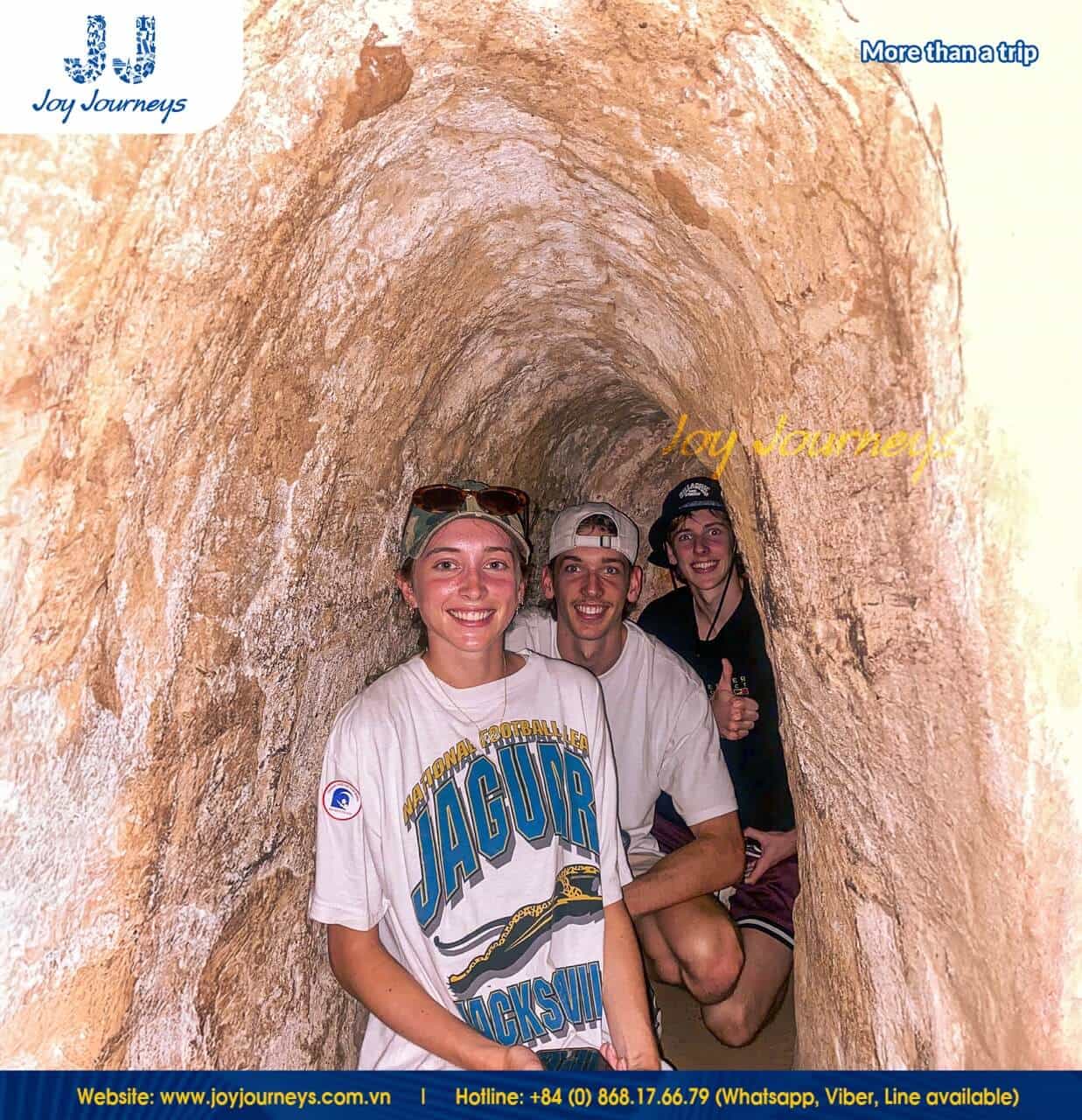
Lack of Natural Light and Fresh Air
Built entirely underground, with the uppermost level approximately three meters below the surface, the tunnels allowed minimal sunlight to enter. Oxygen levels decreased significantly at deeper levels, making breathing more challenging.
This environment also restricted food production, as the lack of sunlight made it impossible to grow crops. People relied on oil lamps and candles for lighting, using them sparingly to conserve resources.
Heat and Humidity
Located in a tropical savanna climate, the Cu Chi Tunnels were subject to high temperatures and humidity throughout the year. Those living within the tunnels had to endure and adapt to these extreme weather conditions.
Flooding and Pests
While the dry season brought heat and aridity, the rainy season caused flooding and increased humidity in the tunnels. Rainwater often stagnated inside, further exacerbated by enemy tactics like pumping water into the tunnels.
Stagnant water created ideal conditions for pests, including mosquitoes, cockroaches, and centipedes, which seriously threatened food storage and tunnel occupants’ health.
Daily Lives of Viet Cong Soldiers in Cu Chi Tunnels
The living conditions in Cu Chi tunnels essay provides a detailed understanding of how the Viet Cong adapted to these difficult circumstances while continuing their resistance efforts.
Adapting to the Darkness
Due to the depth and narrow structure of the tunnels, natural light could not reach the activity areas. Soldiers relied on the faint glow of oil lamps and lighters to perform essential tasks such as transportation, studying, and strategic meetings. Despite the dim lighting, their determination remained undimmed.
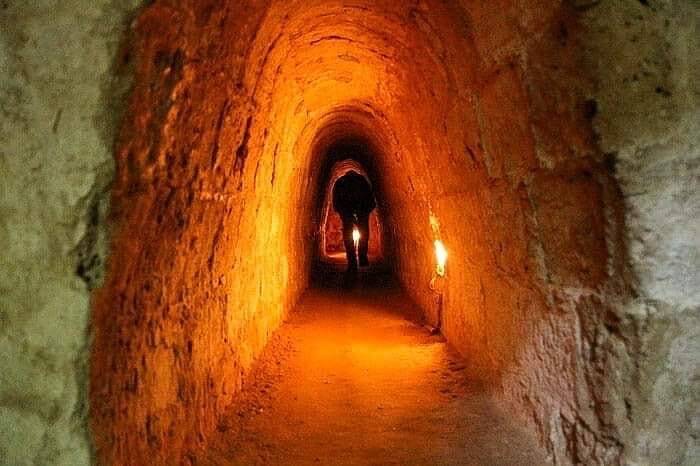
Maintaining Hygiene
Hygiene was a significant challenge in the confined tunnel environment. To address this, waste disposal was meticulously managed. Soldiers and civilians worked at night to transport waste to riverbanks or disperse it into bomb craters, minimizing health risks and maintaining cleanliness.
Sleeping Arrangements
Space in the tunnels was extremely limited, and the constant threat of discovery by enemy forces required vigilance. Soldiers rotated shifts to guard, cook, craft weapons, and rest. This rotation ensured efficient use of space and kept them mentally and physically prepared for any confrontation.
Food and Water
With no access to natural light or ample water, farming was impossible. Food had to be transported from other areas and carefully stored. Staples like tapioca, cassava, and edible roots were preferred for their long shelf life and high energy content.
The tunnels were strategically dug near water sources, and wells were constructed approximately every 16 meters to supply water to the entire system. This resourceful design ensured a steady water supply despite the difficult conditions.
What Were the Cu Chi Tunnels Used For? Beyond being a place to live, the Cu Chi Tunnels were used for strategic operations, including transportation, communication, storage of supplies, and planning military campaigns. They served as a lifeline for the Viet Cong, enabling them to resist powerful enemy forces and endure harsh conditions.
Health and Well-being
The lack of light, combined with high humidity and poor ventilation, caused significant health challenges for those living in the Cu Chi Tunnels.
Diseases and Infections
Life in the tunnels exposed soldiers to a range of diseases and infections. Malaria, intestinal parasites, dysentery, and fungal skin infections were common, compounded by the presence of insects and pests that thrived in the underground environment.
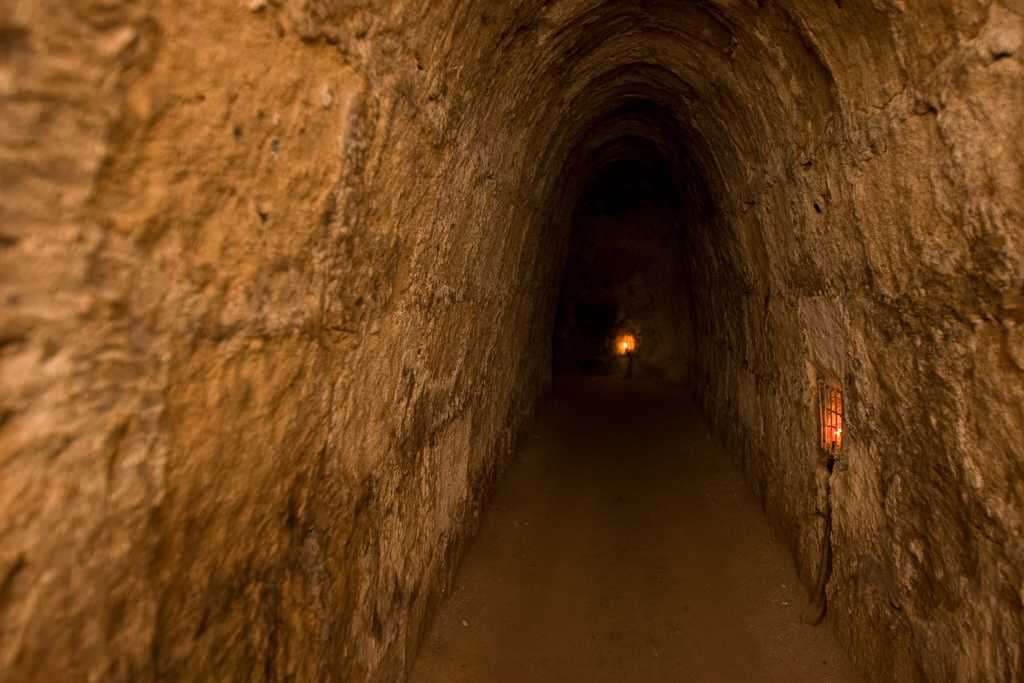
Psychological Impact
Extended periods of living underground took a toll on the mental health of soldiers and civilians. The constant threat of surprise attacks and limited visibility created a sense of anxiety and insecurity. These conditions often led to psychological strain, leaving lasting effects on those who endured life in the tunnels.
Community and Support
Survival in the Cu Chi Tunnels required strong communal bonds and mutual support. Soldiers and civilians worked together, sharing responsibilities such as transporting supplies and preparing meals. Beyond practical assistance, the community played a vital role in maintaining morale. Art performances and dances were organized to provide moments of joy and relaxation, helping to uplift spirits amidst the harsh realities of war.
Ingenious Solutions and Adaptations
Ventilation Systems
The Cu Chi Tunnels were equipped with small, cleverly designed vents disguised as tree roots, termite mounds, or other natural features. These ventilation ducts ensured a steady supply of air for tunnel residents while dissipating cooking smoke to the surface in a way that avoided detection by the enemy.
Hidden Entrances and Traps
The tunnel system, dug deep underground in a zigzag pattern, featured hidden entrances meticulously camouflaged to blend with the environment. Only soldiers and Cu Chi residents could identify these entry points, ensuring the safety of those within. For added security, booby traps were strategically placed around entrances, making it nearly impossible for enemies to penetrate the tunnels.
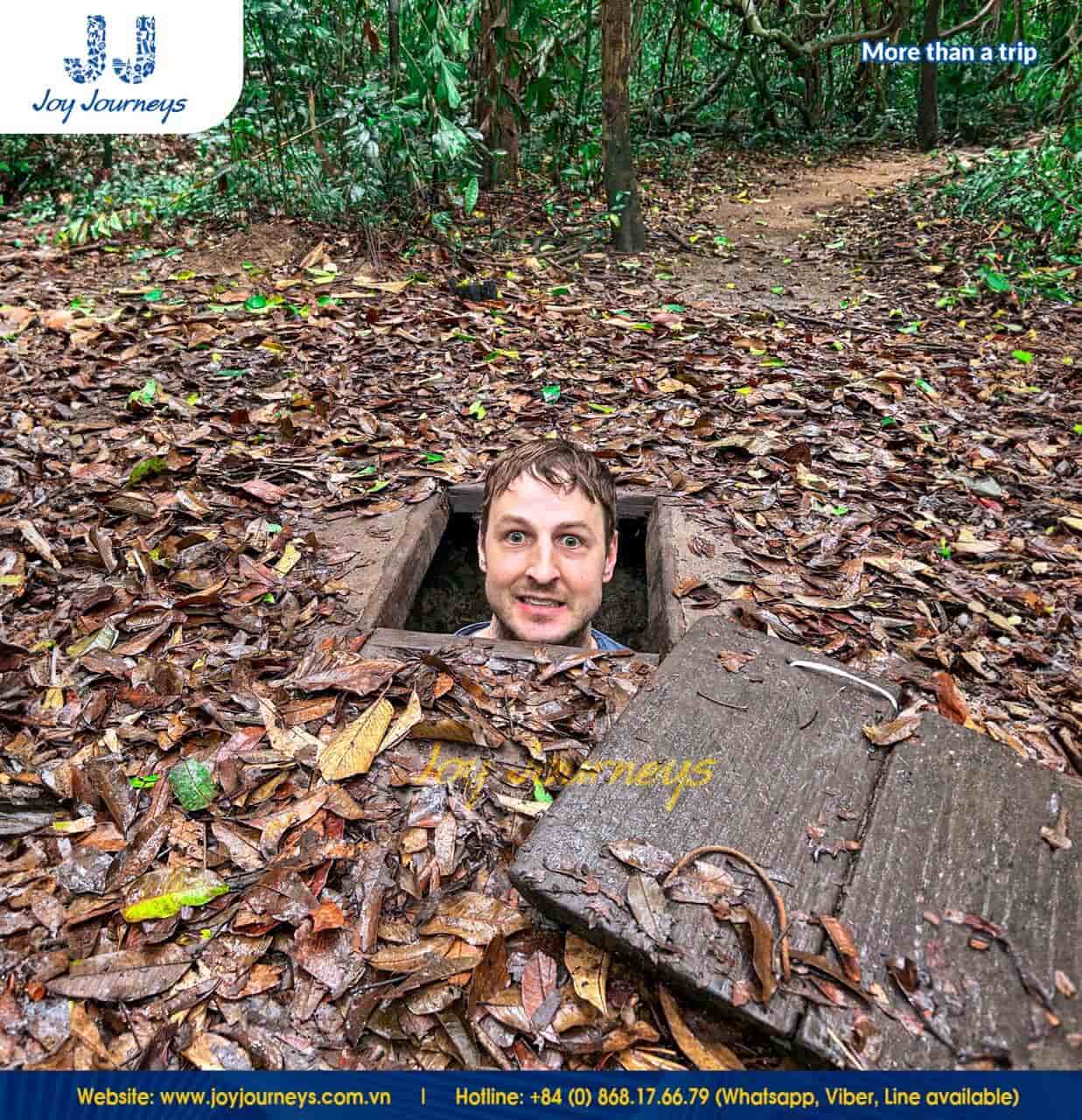
Underground Hospitals and Kitchens
Designed for wartime use, the tunnels included essential facilities such as underground hospitals and kitchens. These medical areas served as places where soldiers could be bandaged, diagnosed, and treated during the resistance war.
The Hoang Cam kitchen system was particularly innovative, designed to disperse cooking smoke far from its source to prevent enemy detection. The Cu Chi Tunnels map highlights the ingenuity and meticulous planning of the soldiers who created this intricate underground network.
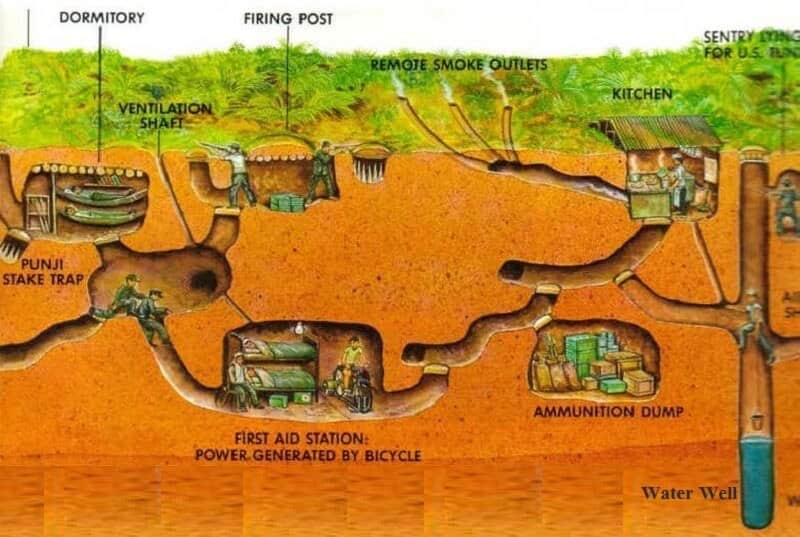
The Cu Chi Tunnels Today: A Testament to Resilience
Today, the Cu Chi Tunnels have become a significant tourist destination for both domestic and international visitors.
Preserving History
For the Vietnamese, the tunnels serve as a powerful testament to the resilience and unwavering spirit of their ancestors during the struggle for independence and peace. They preserve the nation’s invaluable historical legacy. For foreign tourists, visiting the Cu Chi Tunnels offers a unique opportunity to gain deeper insights into Vietnam’s history, culture, and people, fostering a stronger connection to this remarkable land.
Visiting the Tunnels
A common question among visitors is, How far is Cu Chi Tunnels from Ho Chi Minh? The tunnels are located approximately 70 km from the city, making them easily accessible within a half-day trip, with travel times ranging from 2 to 2.5 hours.
For those planning a visit, Cu Chi Tunnels opening hours are from 7:00 AM to 5:00 PM daily. During holidays, checking in advance is a good idea to ensure regular operations. Tickets cost approximately 125,000 VND per foreign visitor, with a 50% discount for children and students aged 7–16, and free entry for children under 7.
Why Choose a Guided Tour
As a historical site with profound significance, the Cu Chi Tunnels are best explored with the help of a knowledgeable guide. Guided tours often include transportation, expert commentary, and assistance throughout the visit. A professional guide can provide valuable insights, enriching your understanding of the site’s historical and cultural importance.
Additionally, a guided tour ensures timely support should you feel discomfort from the narrow spaces or the tropical heat, offering a safer and more enjoyable experience.
Joy Journeys’ Cu Chi Tunnels Tours
Joy Journeys has been dedicated to providing exceptional tours of the Cu Chi Tunnels, combining well-researched itineraries with guest feedback to deliver a memorable experience. Our tours prioritize small groups of fewer than 10 participants, ensuring personalized attention and excellent care.
With a warm and hospitable attitude, our professionally trained guides share valuable information, answer your questions, and help you connect deeply with Vietnam’s rich history and culture. Joy Journeys guarantees that your visit to the Cu Chi Tunnels will be both informative and unforgettable.
Living conditions in Cu Chi Tunnels Frequently Asked Questions
What are the Cu Chi Tunnels like?
The Cu Chi Tunnels are an intricate and extensive underground network often described as an “underground maze.” Stretching over 250 kilometers in length, they served as a shelter for the Vietnamese army and civilians. These tunnels were used for revolutionary activities, weapon transport, food storage, and more during the war.
What is the architecture of the Cu Chi Tunnels?
The Cu Chi Tunnels feature a multi-level underground design. The first floor is located 3 meters below ground, the second floor 6 meters, and the third floor 12 meters deep. Dug entirely by hand with rudimentary tools, the tunnels were reinforced with clay to ensure durability and structural integrity.
Are Cu Chi Tunnels claustrophobic?
Yes, the Cu Chi Tunnels can feel stuffy and confined. Although sections of the tunnels open for tourism have been widened compared to the original design, they remain narrow and dark, evoking the challenging living conditions experienced by those who once resided there.
What advantage did the Cu Chi Tunnels give the Viet Cong?
The Cu Chi Tunnels provided significant advantages to the Viet Cong, acting as shelters, document storage areas, and strategic bases. They also served as living quarters, weapon manufacturing sites, and food transport routes. Additionally, the tunnels played a crucial role in the guerrilla warfare tactics employed by the Vietnamese army and people during the war.
Conclusion
The living conditions in Cu Chi Tunnels were harsh, marked by stuffy, dark, and confined spaces. Yet, driven by courage and unwavering patriotism, the Vietnamese army and people adapted and triumphed over these challenges. The Cu Chi Tunnels stand as a powerful testament to their resilience and tireless efforts throughout nearly 30 years of resistance.
Explore the remarkable history and ingenuity of the Cu Chi Tunnels with Joy Journeys: https://joyjourneys.com.vn/


Related Posts
Saigon’s “Flower Market Replica”: Where To Find Them
Ho Chi Minh City’s floral charm is not limited to its bustling wholesale markets. Imagine wandering through a place where vibrant petals, fragrant blooms, and the spirit of traditional Vietnamese markets come alive—without the overwhelming crowds. A flower market replica captures that magic, blending the beauty of fresh flowers with the charm of a curated, […]
Is it Safe to Travel to Vietnam Right Now? A Complete 2025 Guide
Vietnam has emerged as one of Southeast Asia’s most captivating destinations, drawing millions of visitors annually with its rich culture, stunning landscapes, and incredible cuisine. However, many travelers still ask: Is it safe to travel to Vietnam right now? This comprehensive guide provides you with everything you need to know about Vietnam travel safety in […]
Ho Chi Minh Cu Chi Tunnels Tour: The Ultimate Guide
The Cu Chi Tunnels stand as one of Vietnam’s most remarkable historical sites, offering visitors a profound glimpse into the ingenuity and resilience displayed during the Vietnam War. For travelers, a Ho Chi Minh Cu Chi tunnels tour represents an essential experience that combines education, adventure, and deep cultural understanding. This comprehensive guide will help […]